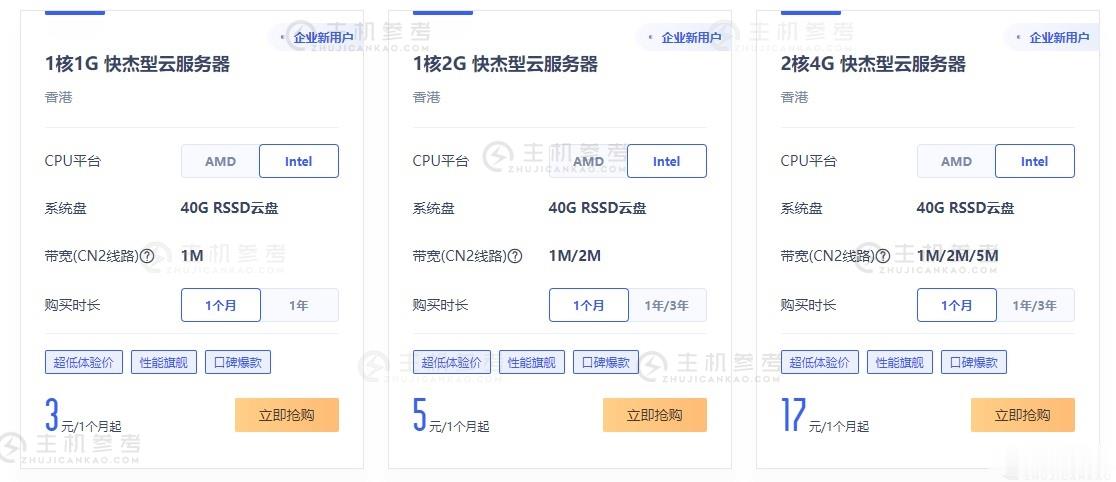icalwww.haole008.com
www.haole008.com 时间:2021-04-06 阅读:()
Asimple,greenandone-potfour-componentsynthesisof1,4-dihydropyridinesandtheiraromatizationSaikatDasSharma,ParasaHazarika,DilipKonwar*SyntheticOrganicChemistryDivision,NorthEastInstituteofScience&Technology(FormerlyRegionalResearchLaboratory,Jorhat),Jorhat785006,Assam,IndiaReceived15May2007;receivedinrevisedform8August2007;accepted16August2007Availableonline23August2007AbstractAsimple,greenandcost-eectiveprotocolwasachievedforthesolventfreesynthesisof1,4-dihydropyridinescatalyzedbyAlCl36H2Oasamildandeectivecatalystat60°Cinhighyields.
1,4-DihydropyridinesthusformedwerearomatizedtopyridinesbyinsitugenerationofHOClemployingAlCl36H2O/H2O2/H2O/EtOHasanexcellentreagentsystemunderdomesticmicrowaveirra-diation(MWI).
Boththesynthesisandoxidationstepswereecientlyaccomplishedinone-potfour-componentfashionfollowingthesameprotocol.
2007ElsevierB.
V.
Allrightsreserved.
Keywords:Hantzsch;1,4-Dihydropyridines;AlCl36H2O;Oxidationtopyridines;H2O21.
Introduction1,4-Dihydropyridine(DHP)[1]scaoldrepresentstheheterocyclicunitofremarkablepharmacologicaleciency.
Theyarewidelyusedclinicallyascalciumchannelblockersforthetreatmentofcardiovasculardiseases,suchas,nifed-ipineandnitrendipineareusedforthetreatmentofhyper-tensionandanginapectoris,nisoldipineisapotentvasodilatorandnimodipineexhibitsselectivityforcerebralvasculature[2].
AnumberofDHPderivativesareemployedaspotentialdrugcandidatesforthetreatmentofcongestiveheartfailure[3].
MoreoverDHPsalsoactasNADHmimicsforthereductionofcarbonylcompoundsandtheirderivatives[4].
Inhumanbodythemainmetabolicrouteofdihydro-pyridinedrugsinvolvetheiroxidationtopyridinescata-lyzedbycytochrome-450inliver[5].
Additionally,thesynthesisofheteroaromaticsbyoxidativedehydrogenationisoffundamentalimportanceinorganicchemistry.
Theseubiquitousfeaturesalwaysencouragesyntheticchemisttoexploreimprovedprotocolsforthesynthesisaswellastheoxidationof1,4-DHPs.
1,4-DihydropyridinesaregenerallysynthesizedbyHantzschreactionwhichinvolvesthecondensationofalde-hydes,b-ketoesterandammoniaorammoniumacetate.
Anumberofimprovedmethodshavebeenreportedinthelit-eratureforthiscondensationwhichinvolvetheuseofmicrowave,ionicliquids,reuxathightemperature,TMSI,I2,Yb(OTf)3,CAN[6],silicagel/NaHSO4[7]andSc(OTf)3[8].
Ontheotherhand,aplethoraofreagentshavebeenemployedfortheoxidationof1,4-DHPs[9–16].
Inspiteofpotentialutilityofthesereagents,mostoftheexistingmethodsforthesynthesisof1,4-DHPsaswellastheiraromatizationsuerfromdrawbackssuchaslowyields,longreactiontimes,occurrenceofseveralsideprod-ucts,useofstoichimetricamountofreagents,useofstrongoxidants,hightemperatureandtheuseofexpensiveandtoxictransitionmetallicreagents.
Therefore,exploringthenewcatalyticsystempreferablyinanenvironmentallybenignmethodtoovercomethesedrawbacksisachalleng-ingtasktotheorganicchemists.
1566-7367/$-seefrontmatter2007ElsevierB.
V.
Allrightsreserved.
doi:10.
1016/j.
catcom.
2007.
08.
008*Correspondingauthor.
Tel.
:+913762370009.
E-mailaddress:dkonwar@yahoo.
co.
uk(D.
Konwar).
www.
elsevier.
com/locate/catcomAvailableonlineatwww.
sciencedirect.
comCatalysisCommunications9(2008)709–714ThechemistryofanhydrousAlCl3hasbeenwellexploredinorganicsynthesisbutitshydratedcounterpart,i.
e.
,AlCl36H2Oisnotfullystudiedtilltoday[17,18].
Inrecentyears,wehaveusedAlCl36H2Oasaversatilereagentfordierentorganictransformations[19–21]becauseitisinexpensive,readilyavailable,lesstoxicandairandmoisturestable.
Soasapartofourongoingresearchinterestingreenchemistry[22–26]andacontinualeortstousealuminumreagents[19–21,27,28]invariousorganictransformationswewishtoreporthereasolventfreesynthesisofDHPscatalyzedby10mol%ofAlCl36H2Oat60°Candtheirone-potoxidationtopyri-dinesbyemploying30%H2O2inpresenceof10mol%ofAlCl36H2Oundermicrowaveirradiationinhydratedmedia.
2.
ExperimentalMeltingpointsweremeasuredusingBuchiB-540appa-ratusandareuncorrected.
1HNMRspectrawererecordedonAvanceDPX300MHzFTNMRspectrometer.
Chem-icalshiftsareexpressedindunitsrelativetotetramethylsil-ane(TMS)signalasinternalreference.
IRspectrawererecordedonFT-IR-system-2000PerkinElmerspectrome-teronKBrpelletsorinCHCl3.
MassspectrawererecordedonESQUIRE3000MassSpectrometer.
Columnchroma-tographywasperformedonsilicagel(60–120mesh)usingethylacetateandhexaneaseluent.
Physicalandspectroscopicdataofalltheknowncom-poundsareinagreementwiththoseofauthenticsamples[6–16].
2.
1.
Typicalexperimentalprocedureforthesynthesisof1,4-dihydropyridinesIna50mlround-bottomask,aldehyde(2mmol),ethylacetoacetate(4mmol)andammoniumacetate(2mmol)werestirredinpresenceofAlCl36H2O(10mol%)insol-ventfreeconditionat60°Cfor1.
0–2.
2h.
TheprogressofthereactionwasmonitoredbyTLC.
Aftercompletionofthereaction,theproductwasextractedwithethylace-tate(2·25ml),washedwith10%NaHCO3solutionandthenorganiclayerwithbrine(2·15ml),driedoveranhy-drousNa2SO4andconcentratedundervacuum.
Theprod-uctswereseparatedandpuriedbycolumnchromatographyonsilicagel(60–120mesh)usingethylacetate/hexanemixtureaseluenttoaordpure1,4-dihydropyridines.
2.
1.
1.
Diethyl-2,6-dimethyl-4-phenyl-1,4-dihydropyridine-3,5-dicarboxylate(4a)M.
P.
157–158°C;Paleyellowcrystals;1HNMR(CDCl3,300MHz):d1.
20(t,6H),2.
26(s,6H),4.
06(q,4H),4.
98(s,1H),5.
62(s,1H),7.
09–7.
26(m,5H);FT-IR(CHCl3,cm1):1697.
7,3337.
9;MS(m/z):352[M+Na]+.
Anal.
Calcd.
forC19H23O4N:C,69.
28;H,7.
04;N,4.
25.
Found:C,69.
24;H,7.
09;N,4.
21.
2.
2.
Typicalexperimentalprocedurefortheoxidationof1,4-dihydropyridinestopyridinesIna50mlbeaker,DHP(2mmol)wasmixedwith10mol%AlCl36H2Oand2equivof30%H2O2ina2mlmixtureofH2OandofEtOH(5:1).
Thereactionmix-turewasthenirradiatedinadomesticmicrowaveovenfor4–8minemploying180Wat35°C.
TheprogressofthereactionwasmonitoredbyTLC.
Aftercompletionofthereaction,theproductwasextractedwithethylacetate(2·25ml),washedwith10%NaHCO3solutionandthenorganiclayerwithbrine(2·15ml),driedoveranhydrousNa2SO4andconcentratedundervacuumtogivethecrudeproductwhichwasreasonablypure(TLCand1HNMR).
However,analyticallypureproductcanbeobtainedbyrecrystallisationofthecrudeproductfromethanolorincaseofliquid,theproductmaybepuriedbycolumnchro-matographyonsilicagel(60–120mesh)usingethylacetate/hexanemixtureaseluent.
2.
1.
2.
Diethyl-2,6-dimethyl-4-phenyl-3,5-pyridinedicarboxylate(5a)M.
P.
61–62°C;Colorlesscrystals.
1HNMR(CDCl3,300MHz):d0.
92(t,6H),2.
60(s,6H),4.
01(q,4H),7.
19–7.
35(m,5H);FT-IR(CHCl3,cm1):1727.
6;MS(m/z):328[M++1].
Anal.
Calcd.
forC19H21O4N:C,69.
71;H,6.
47;N,4.
28.
Found:C,69.
76;H,6.
43;N,4.
25.
2.
3.
Typicalexperimentalprocedureforthesynthesisof1,4-dihydropyridinesandtheirsubsequentoxidationtopyridinesinone-potIna50mlround-bottomask,aldehyde(2mmol),ethylacetoacetate(4mmol)andammoniumacetate(2mmol)werestirredinpresenceofAlCl36H2O(10mol%)insol-ventfreeconditionat60°Cfor1.
0–2.
2h.
Aftercompleteformationof1,4-dihydropyridines(monitoredbyTLC),thereactionmixturewastreatedwith2equivof30%H2O2in2mlmixtureofH2OandEtOH(5:1).
Thereactionmixturewasthenirradiatedinadomesticmicrowaveovenfor4–8minemploying180Wat35°C.
Aftercompletionofthereaction,theproductwasextractedwithethylacetate(2·25ml),washedwith10%NaHCO3solution,andthenorganiclayerwithbrine(2·15ml),driedoverNa2SO4andconcentratedundervacuumtogivethecrudeproductwhichwaspuriedbycolumnchromatographyonsilicagel(60–120mesh)usingethylacetate/hexanemixtureaseluenttoaordpurepyridinederivatives.
3.
ResultsanddiscussionIntheeortstodevelopanecientandenvironmentallybenignmethodologyforthesynthesisofDHPsweinitiatedourstudiesbysubjectingcatalyticamountofAlCl36H2Otothemixtureofbenzaldehyde,ethylacetoacetateandammoniumacetateinsolventfreeconditionatroomtem-perature.
Unfortunately,theresultedyieldwasverypoor710S.
DasSharmaetal.
/CatalysisCommunications9(2008)709–714evenafter24hofstirring.
Toeectthereaction,varioussolventsystemswerescreenedatdierenttemperatures.
WewerepleasedtoseethatthesynthesisofDHPwase-cientlycatalyzedbyAlCl36H2Oinsolventfreeconditionatelevatedtemperatureleadingtohighyieldofproduct.
Thereactionconditionwasthenoptimizedbyconductingthereactionindierenttemperaturesandemployingdier-entcatalystloadings.
TheresultsaresummarizedinTable1.
Itisevidentthatthebestresultwasobtainedbytheapplicationof10mol%ofAlCl36H2Oinsolventfreecon-ditionat60°C(Table1,entry7).
Higheramountofthecatalystsubstantiallyreducetheamountofyieldassideproductsformed,outofwhichthemajoronewasfoundtobe2,6-diphenyl-3-ethoxycarbonyl-4-piperidone(m.
p.
112–114°C)[29].
Although,theroleofhigheramountsofAlCl36H2Oforitsformationisnotclear.
Othersideproductswerepresentinlessamountsandnotidentied.
Theoptimizedreactionconditionsweresubsequentlyappliedtothereactionbetweenvariousaldehydesandb-ketoestersinpresenceofammoniumacetateinsolventfreeconditionat60°C.
Inmostcases,thedesiredDHPderivativeswereobtainedinhighyields.
Bothelectronrichandelectrondecientaromaticaldehydesaswellashetero-cycliconesworkedwell.
Aliphaticaldehydesaordedequallygoodresults.
Manyofthepharmacologicallysig-nicantsubstitutionpatternscanbeintroducedwithe-ciency(Table2).
Inatypicalprocedure,2mmolofaldehyde,4mmolofb-ketoesterand2mmolofammoniumacetateweremixedinsolventfreeconditioninpresenceof10mol%ofAlCl36H2Oandthereactionmixturewasstir-redfor1.
0–2.
2hat60°C,afterwork-up,itproducedthecorrespondingDHPswithgoodyields.
AfterthesuccessfulpreparationofDHPswenextwishedtoaromatizethembyaneco-friendlymethod.
InthisregardweenvisionedthatifwetreathydrogenperoxidetoAlCl36H2OitwillgenerateHOClbecauseAlCl36H2Oisinreality[19–21,30],[Al(H2O)6]Cl3,andcanexistas[Al(H2O)5(OH)]2+H+3Clor[Al(H2O)4-(OH)2]+2H+3Cletc.
insolutionandaccordinglytheoxidationof1,4-DHPcouldbeaccomplishedbyHOCl.
Inaninitialendeavor,diethyl-4-phenyl-2,6-dimethyl-1,4-dihydropyridine-3,5-dicarboxylatewerestirredinwaterandfewdropsofethanolinpresenceofAlCl36H2OandH2O2atambienttemperature.
Buttheresultedyieldwasverypoorevenafter12hofstirring.
Theyieldwasnotsat-isfactoryevenafter2hreux.
Inrecentyears,microwaveassistedorganicreactionshasreceivedmuchattentionfromchemists,becauseofthereductionofreactiontime,formationofhighyieldofproductsandsuppressionofsideproductsrelativetoconventionalthermalheating.
Sowehavedecidedtostudytheoxidationof1,4-DHPsundermicrowaveirradiationconditionfortheecientsynthesisofpyridines.
Toourdelight,1,4-DHPfurnishedthecorre-spondingpyridinederivativeinexcellentyieldunderdomesticmicrowaveirradiationbyAlCl36H2O/30%H2O2/H2O/EtOHsystem.
Wethenscreenedthereactionconditionbytakingdierentoxidantsinpresenceof10mol%ofAlCl36H2O.
TheresultsaredocumentedinTable3.
Interestingly,almostquantitativeyieldswereachievedwhenH2O2andNaNO2wereusedasoxidants(Table3,entries1and2).
Whereas,yieldsgraduallydecreasedaswemovedalongKClO3,KBrO3toKIO3(Table3,entries3,4,5).
TheseresultsarequiteexpectedastheoxidizingstrengthofthecorrespondingacidswhichTable1Condensationofbenzaldehyde,ethylacetoacetateandammoniumacetatecatalyzedbyAlCl36H2Ounderdierentcatalystloadings,temperatureandsolventsystemsCHOOONHOOOEtEtO++SolventNH4OAcAlCl3.
6H2OOEt2EntryCatalystload(mol%)SolventsTemperature(°C)Time(h)Conversion(%)Yield(%)110Neatrt244341210EtOHrt244034310EtOH6037167410MeOH6036862510MeCN6035753610Neat6518380710Neat6018380810Neat501.
3777595Neat501.
38077105Neat601.
380771115Neat501.
379761215Neat601.
375741330Neat501.
374741430Neat601.
37170Yieldreferstoisolatedyield.
Conversionsdeterminedby1HNMRspectroscopy.
S.
DasSharmaetal.
/CatalysisCommunications9(2008)709–714711weregeneratedinsitubythereactionofhydrogenperoxideormetaloxidantswithHCl(sourceisAlCl36H2O)followtheorderHOCl>HClO3>HBrO3>HIO3[31].
Ontheotherhand,insitugenerationofnitrousacidfromsodiumnitriteandHClinaqueousmediummighthaveactedasasourceofNO+[32],whichseemstoberesponsiblefortheexcellentyieldofpyridine.
Thebestresultwasachievedbycarryingoutthereactionwith2equivof30%H2O2inpres-enceof10mol%ofAlCl36H2OinH2O/EtOHassolventsystem.
Inlightofthesendings,weproceededtoinvestigatethesubstrategeneralityofAlCl36H2O/H2O2/H2O/EtOHmediatedoxidationofDHPsundermicrowaveirradiation.
Awidevarietyof1,4-DHPshavingalkyl,arylandheterocy-clicsubstituentsweresuccessfullyoxidizedtocorrespondingpyridinesinexcellentyield(Table4).
ItwasobservedthattheoxidationofDHPwithsecondaryalkylgroupatfour-positionwasaccompaniedbyexpulsionofthis(Table4,entryg)substituentresultingdealkylatedpyridines.
Thisprobablyduetotheelectronreleasingabilityaswellassta-bilityofthecorrespondingradical.
Inarepresentativeexperiment,2mmolofDHPwastreatedwith10mol%ofAlCl36H2Oand2equivof30%H2O2in2mlmixtureofH2OandEtOH(5:1)undermicrowaveirradiationfor3–8min,afterwork-up,itfurnishedthecorrespondingpyri-dineinexcellentyields.
Thereactionwasverycleanandnosideproductwasobtainedinanyrun.
Additionally,Table2AlCl36H2Ocatalyzedsynthesisof1,4-dihydropyridinesOONHOO++NH4OAcAlCl3.
6H2O10mol%60Csolventfree,2R1CHOOR2R1OR2R2O1234EntryR1R2ProductsTime(h)Conversion(%)Yield(%)aC6H5Et4a1.
08380b4-MeOC6H4Et4b1.
28177c4-O2NC6H4Et4c2.
27775d4-ClC6H4Et4d2.
17976eCH3Et4e2.
07674fCH3CH2Et4f2.
07776g(CH3)2CHEt4g1.
58178h2-FurylEt4h2.
07573iC6H5Me4i1.
08278j4-MeOC6H4Me4j1.
27775Yieldreferstoisolatedyield.
Conversionsdeterminedby1HNMRspectroscopy.
Table3Oxidationof1,4-dihydropyridinestopyridinesunderdierentoxidantsinthepresenceof10mol%AlCl36H2OinH2O/EtOHundermicrowaveirradiationNHOOOEtEtONOOOEtEtO10mol%AlCl3.
6H2O,Oxidant,H2O/EtOH,MicrowaveEntryOxidantTime(m)Conversion(%)Yield(%)130%H2O24100992NaNO26100993KClO31077724KBrO31054515KIO31043396Nooxidant300NoreactionYieldreferstoisolatedyield.
Conversionsdeterminedby1HNMRspectroscopy.
Reactionconditions:2equivoxidantswereused,MWI180W(35°C).
712S.
DasSharmaetal.
/CatalysisCommunications9(2008)709–714thecrudeproductsobtainedwereofhighpurityandinmostofthecasesnochromatographicseparationwererequired.
Regardingthemechanismofthereaction,itmaybepro-posedthattheliberatedHClfrom[Al(H2O)5(OH)]2+H+3Clor[Al(H2O)4(OH)2]+2H+3ClreactswithH2O2togenerateHOCl.
ThentheoxidationmaybeinitiatedbyasingleelectrontransfertoCl+iontoproducechlorinefreeradicalandaradicalcation[A]thatsubsequentlyloosesaprotontogeneratearadical[B]whichinturnisattackedbychlorinefreeradicaltoproducepyridineinthereactionmixture(Scheme1).
Aftercarryingoutthesynthesisof1,4-DHPsandtheiroxidationseparately,wedecidedtoaccomplishboththereactioninone-potfour-componentfashion.
So,1,4-DHPsweresynthesizedbyemploying10mol%AlCl36H2Oundersolventfreeconditionat60°Candthusformed1,4-DHPsweresubsequentlyoxidizedbyadding2equivof30%H2O2in2mlmixtureofH2OandEtOH(5:1)inthesamepotundermicrowaveirradiation(Table5).
TheproductwasnotseparatedorpuriedaftertherststepandnoadditionalamountofAlCl36H2Owasaddedintheoxidationstep.
4.
ConclusionsInconclusion,wehavedevelopedasimpleandecientsyntheticprotocolforthesynthesisof1,4-dihydropyridinesundersolventfreeconditioncatalyzedby10mol%ofAlCl36H2Oat60°CandtheiraromatizationwithinsitugenerationofHOClbythereactionof30%H2O2and10mol%AlCl36H2Oinhydratedmediaundermicro-waveirradiationinexcellentyields.
Inadditiontothatboththesynthesisandaromatizationwereachievedsuccessfullyinone-potfour-componentfashionstartingfromalde-hydes,b-ketoestersandammoniumacetatefollowingthesameprotocols.
Mildreactioncondition,costeciency,simplicityinoperation,lowercatalystloading,reductionofreactionstepsconstitutesignicantfeaturesofthisprotocol.
AcknowledgementsTheauthorsacknowledgetheDirector,andtheAnalyt-icalDivisionofNEIST,Jorhat,fortheirhelps.
Also,SDSandPHthankCSIR,NewDelhiforthegrantoffellowships.
Table4Oxidationof1,4-dihydropyridinestopyridinesNHOONOOR1OR2R2OR1OR2R2OAlCl3.
6H2O,10mol%H2O2/H2O/EtOH,30%45MicrowaveEntryR1R2ProductsTime(m)Conversion(%)Yield(%)aC6H5Et5a410099b4-MeOC6H4Et5b59897c4-O2NC6H4Et5c69696d4-ClC6H4Et5d69797eCH3Et5e59796fCH3CH2Et5f59595g(CH3)2CHEt5g3100100h2-FurylEt5h89494iC6H5Me5i49998j4-MeOC6H4Me5j59897Yieldreferstoisolatedyield.
Conversionsdeterminedby1HNMRspectroscopy.
Reactionconditions:2equivH2O2wereused,MWI180W(35°C).
NHCOOEtEtOOCNHCOOEtEtOOCNCOOEtEtOOCHNCOOEtEtOOC.
RHHCl+H2O2HOCl+H2ORH+.
Cl+Cl.
RH+Cl.
RHCl[A][B]Scheme1.
Plausiblemechanismfortheoxidationof1,4-DHPtopyridine.
S.
DasSharmaetal.
/CatalysisCommunications9(2008)709–714713References[1]D.
M.
Stout,A.
I.
Meyers,Chem.
Rev.
82(1982)223.
[2]R.
H.
Boecker,F.
P.
Guengerich,J.
Med.
Chem.
29(1986)1596.
[3]D.
Vo,W.
C.
Matowe,M.
Ramesh,N.
Iqbal,M.
W.
Wolowyk,S.
E.
Howlett,E.
E.
Knaus,J.
Med.
Chem.
38(1995)2851.
[4]M.
Rueping,A.
P.
Antonchick,T.
Theissmann,Angew.
Chem.
,Int.
Ed.
45(2006)3683,andreferencescitedtherein.
[5]F.
P.
Guengerich,M.
V.
Martin,P.
H.
Beaune,P.
Kremers,T.
Wol,D.
J.
Waxman,J.
Biol.
Chem.
261(1986)5051.
[6]S.
Ko,C.
-F.
Yao,Tetrahedron62(2006)7293,andreferencescitedtherein.
[7]M.
A.
Chari,K.
Syamasundar,Catal.
Commun.
6(2005)624.
[8]J.
L.
Donelson,R.
A.
Gibbs,S.
K.
De,J.
Mol.
Catal.
A:Chem.
256(2006)309.
[9]S.
H.
Mashraqui,M.
A.
Karnik,TetrahedronLett.
39(1998)4895.
[10]R.
S.
Varma,D.
Kumar,TetrahedronLett.
40(1999)21.
[11]Y.
-Z.
Mao,M.
-Z.
Jin,Z.
-L.
Liu,L.
-M.
Wu,Org.
Lett.
2(2000)741.
[12]N.
Nakamichi,Y.
Kawashita,M.
Hayashi,Org.
Lett.
4(2002)3955.
[13]M.
M.
Heravi,F.
K.
Behbahani,H.
A.
Oskooie,R.
H.
Shoar,Tetrahe-dronLett.
46(2005)2775.
[14]M.
Nasr-Esfahani,M.
Moghadam,S.
Tangestaninejad,V.
Mirkhani,A.
R.
Momeni,Bioorg.
Med.
Chem.
14(2006)2720.
[15]J.
J.
Xia,G.
W.
Wang,Synthesis(2005)2379.
[16]J.
S.
Yadav,B.
V.
S.
Reddy,A.
K.
Basak,G.
Baishya,A.
V.
Narsaiah,Synthesis(2006)451.
[17]D.
K.
Dutta,D.
Konwar,J.
Chem.
Res.
(1998)266.
[18]D.
K.
Dutta,D.
Konwar,J.
S.
Sandhu,IndianJ.
Chem.
34B(1995)725.
[19]M.
Boruah,D.
Konwar,Synlett(2001)795.
[20]M.
Boruah,D.
Konwar,J.
Org.
Chem.
67(2002)7138.
[21]P.
Gogoi,D.
Konwar,S.
DasSharma,P.
K.
Gogoi,Synth.
Commun.
36(2006)1259.
[22]P.
Gogoi,G.
K.
Sarmah,D.
Konwar,J.
Org.
Chem.
69(2004)5153.
[23]P.
Gogoi,P.
Hazarika,D.
Konwar,J.
Org.
Chem.
70(2005)1934.
[24]P.
Gogoi,D.
Konwar,Org.
Biomol.
Chem.
3(2005)3473.
[25]P.
Gogoi,D.
Konwar,TetrahedronLett.
47(2006)79.
[26]S.
DasSharma,P.
Gogoi,D.
Konwar,GreenChem.
9(2007)153.
[27]D.
K.
Dutta,D.
Konwar,TetrahedronLett.
41(2000)6227.
[28]D.
Konwar,R.
C.
Boruah,J.
S.
Sandhu,Synthesis(1990)337.
[29]V.
Baliah,V.
Gopalakrishnan,T.
S.
Govindarajan,J.
IndianChem.
Soc.
31(1954)832.
[30]N.
N.
Greenwood,A.
Enandshow,ChemistryofElements,PergamonPress,1984,p.
254.
[31]J.
D.
Lee,ConciseInorganicChemistry,BlackwellScienceLtd.
,Oxford,1996,p.
613.
[32]M.
A.
Zolgol,M.
H.
Zebarjadian,G.
Chehardoli,H.
Keypour,S.
Salehzadeh,M.
Shamsipur,J.
Org.
Chem.
66(2001)3619.
Table5One-potfour-componentsynthesisofpyridinesOONOO++NH4OAcAlCl3.
6H2O10mol%60Csolventfree,2R1CHOOR2R1OR2R2O1)2)30%H2O2/H2O/EtOHMicrowave1236EntryR1R2ProductsTime(t1)A(h)Time(t2)B(m)Conversion(%)Yield(%)aC6H5Et6a1.
045855b4-MeOC6H4Et6b1.
255452c4-O2NC6H4Et6c2.
265251d(CH3)2CHEt6d1.
536057eC6H5Me6e1.
045754Yieldreferstoisolatedyield.
Conversionsdeterminedby1HNMRspectroscopy.
Reactionconditions:2equivoxidantswereused,MWI180W(35°C).
At1:Reactiontimeforthesynthesisof1,4-DHPs.
Bt2:Reactiontimeforthearomatizationof1,4-DHPs.
714S.
DasSharmaetal.
/CatalysisCommunications9(2008)709–714
1,4-DihydropyridinesthusformedwerearomatizedtopyridinesbyinsitugenerationofHOClemployingAlCl36H2O/H2O2/H2O/EtOHasanexcellentreagentsystemunderdomesticmicrowaveirra-diation(MWI).
Boththesynthesisandoxidationstepswereecientlyaccomplishedinone-potfour-componentfashionfollowingthesameprotocol.
2007ElsevierB.
V.
Allrightsreserved.
Keywords:Hantzsch;1,4-Dihydropyridines;AlCl36H2O;Oxidationtopyridines;H2O21.
Introduction1,4-Dihydropyridine(DHP)[1]scaoldrepresentstheheterocyclicunitofremarkablepharmacologicaleciency.
Theyarewidelyusedclinicallyascalciumchannelblockersforthetreatmentofcardiovasculardiseases,suchas,nifed-ipineandnitrendipineareusedforthetreatmentofhyper-tensionandanginapectoris,nisoldipineisapotentvasodilatorandnimodipineexhibitsselectivityforcerebralvasculature[2].
AnumberofDHPderivativesareemployedaspotentialdrugcandidatesforthetreatmentofcongestiveheartfailure[3].
MoreoverDHPsalsoactasNADHmimicsforthereductionofcarbonylcompoundsandtheirderivatives[4].
Inhumanbodythemainmetabolicrouteofdihydro-pyridinedrugsinvolvetheiroxidationtopyridinescata-lyzedbycytochrome-450inliver[5].
Additionally,thesynthesisofheteroaromaticsbyoxidativedehydrogenationisoffundamentalimportanceinorganicchemistry.
Theseubiquitousfeaturesalwaysencouragesyntheticchemisttoexploreimprovedprotocolsforthesynthesisaswellastheoxidationof1,4-DHPs.
1,4-DihydropyridinesaregenerallysynthesizedbyHantzschreactionwhichinvolvesthecondensationofalde-hydes,b-ketoesterandammoniaorammoniumacetate.
Anumberofimprovedmethodshavebeenreportedinthelit-eratureforthiscondensationwhichinvolvetheuseofmicrowave,ionicliquids,reuxathightemperature,TMSI,I2,Yb(OTf)3,CAN[6],silicagel/NaHSO4[7]andSc(OTf)3[8].
Ontheotherhand,aplethoraofreagentshavebeenemployedfortheoxidationof1,4-DHPs[9–16].
Inspiteofpotentialutilityofthesereagents,mostoftheexistingmethodsforthesynthesisof1,4-DHPsaswellastheiraromatizationsuerfromdrawbackssuchaslowyields,longreactiontimes,occurrenceofseveralsideprod-ucts,useofstoichimetricamountofreagents,useofstrongoxidants,hightemperatureandtheuseofexpensiveandtoxictransitionmetallicreagents.
Therefore,exploringthenewcatalyticsystempreferablyinanenvironmentallybenignmethodtoovercomethesedrawbacksisachalleng-ingtasktotheorganicchemists.
1566-7367/$-seefrontmatter2007ElsevierB.
V.
Allrightsreserved.
doi:10.
1016/j.
catcom.
2007.
08.
008*Correspondingauthor.
Tel.
:+913762370009.
E-mailaddress:dkonwar@yahoo.
co.
uk(D.
Konwar).
www.
elsevier.
com/locate/catcomAvailableonlineatwww.
sciencedirect.
comCatalysisCommunications9(2008)709–714ThechemistryofanhydrousAlCl3hasbeenwellexploredinorganicsynthesisbutitshydratedcounterpart,i.
e.
,AlCl36H2Oisnotfullystudiedtilltoday[17,18].
Inrecentyears,wehaveusedAlCl36H2Oasaversatilereagentfordierentorganictransformations[19–21]becauseitisinexpensive,readilyavailable,lesstoxicandairandmoisturestable.
Soasapartofourongoingresearchinterestingreenchemistry[22–26]andacontinualeortstousealuminumreagents[19–21,27,28]invariousorganictransformationswewishtoreporthereasolventfreesynthesisofDHPscatalyzedby10mol%ofAlCl36H2Oat60°Candtheirone-potoxidationtopyri-dinesbyemploying30%H2O2inpresenceof10mol%ofAlCl36H2Oundermicrowaveirradiationinhydratedmedia.
2.
ExperimentalMeltingpointsweremeasuredusingBuchiB-540appa-ratusandareuncorrected.
1HNMRspectrawererecordedonAvanceDPX300MHzFTNMRspectrometer.
Chem-icalshiftsareexpressedindunitsrelativetotetramethylsil-ane(TMS)signalasinternalreference.
IRspectrawererecordedonFT-IR-system-2000PerkinElmerspectrome-teronKBrpelletsorinCHCl3.
MassspectrawererecordedonESQUIRE3000MassSpectrometer.
Columnchroma-tographywasperformedonsilicagel(60–120mesh)usingethylacetateandhexaneaseluent.
Physicalandspectroscopicdataofalltheknowncom-poundsareinagreementwiththoseofauthenticsamples[6–16].
2.
1.
Typicalexperimentalprocedureforthesynthesisof1,4-dihydropyridinesIna50mlround-bottomask,aldehyde(2mmol),ethylacetoacetate(4mmol)andammoniumacetate(2mmol)werestirredinpresenceofAlCl36H2O(10mol%)insol-ventfreeconditionat60°Cfor1.
0–2.
2h.
TheprogressofthereactionwasmonitoredbyTLC.
Aftercompletionofthereaction,theproductwasextractedwithethylace-tate(2·25ml),washedwith10%NaHCO3solutionandthenorganiclayerwithbrine(2·15ml),driedoveranhy-drousNa2SO4andconcentratedundervacuum.
Theprod-uctswereseparatedandpuriedbycolumnchromatographyonsilicagel(60–120mesh)usingethylacetate/hexanemixtureaseluenttoaordpure1,4-dihydropyridines.
2.
1.
1.
Diethyl-2,6-dimethyl-4-phenyl-1,4-dihydropyridine-3,5-dicarboxylate(4a)M.
P.
157–158°C;Paleyellowcrystals;1HNMR(CDCl3,300MHz):d1.
20(t,6H),2.
26(s,6H),4.
06(q,4H),4.
98(s,1H),5.
62(s,1H),7.
09–7.
26(m,5H);FT-IR(CHCl3,cm1):1697.
7,3337.
9;MS(m/z):352[M+Na]+.
Anal.
Calcd.
forC19H23O4N:C,69.
28;H,7.
04;N,4.
25.
Found:C,69.
24;H,7.
09;N,4.
21.
2.
2.
Typicalexperimentalprocedurefortheoxidationof1,4-dihydropyridinestopyridinesIna50mlbeaker,DHP(2mmol)wasmixedwith10mol%AlCl36H2Oand2equivof30%H2O2ina2mlmixtureofH2OandofEtOH(5:1).
Thereactionmix-turewasthenirradiatedinadomesticmicrowaveovenfor4–8minemploying180Wat35°C.
TheprogressofthereactionwasmonitoredbyTLC.
Aftercompletionofthereaction,theproductwasextractedwithethylacetate(2·25ml),washedwith10%NaHCO3solutionandthenorganiclayerwithbrine(2·15ml),driedoveranhydrousNa2SO4andconcentratedundervacuumtogivethecrudeproductwhichwasreasonablypure(TLCand1HNMR).
However,analyticallypureproductcanbeobtainedbyrecrystallisationofthecrudeproductfromethanolorincaseofliquid,theproductmaybepuriedbycolumnchro-matographyonsilicagel(60–120mesh)usingethylacetate/hexanemixtureaseluent.
2.
1.
2.
Diethyl-2,6-dimethyl-4-phenyl-3,5-pyridinedicarboxylate(5a)M.
P.
61–62°C;Colorlesscrystals.
1HNMR(CDCl3,300MHz):d0.
92(t,6H),2.
60(s,6H),4.
01(q,4H),7.
19–7.
35(m,5H);FT-IR(CHCl3,cm1):1727.
6;MS(m/z):328[M++1].
Anal.
Calcd.
forC19H21O4N:C,69.
71;H,6.
47;N,4.
28.
Found:C,69.
76;H,6.
43;N,4.
25.
2.
3.
Typicalexperimentalprocedureforthesynthesisof1,4-dihydropyridinesandtheirsubsequentoxidationtopyridinesinone-potIna50mlround-bottomask,aldehyde(2mmol),ethylacetoacetate(4mmol)andammoniumacetate(2mmol)werestirredinpresenceofAlCl36H2O(10mol%)insol-ventfreeconditionat60°Cfor1.
0–2.
2h.
Aftercompleteformationof1,4-dihydropyridines(monitoredbyTLC),thereactionmixturewastreatedwith2equivof30%H2O2in2mlmixtureofH2OandEtOH(5:1).
Thereactionmixturewasthenirradiatedinadomesticmicrowaveovenfor4–8minemploying180Wat35°C.
Aftercompletionofthereaction,theproductwasextractedwithethylacetate(2·25ml),washedwith10%NaHCO3solution,andthenorganiclayerwithbrine(2·15ml),driedoverNa2SO4andconcentratedundervacuumtogivethecrudeproductwhichwaspuriedbycolumnchromatographyonsilicagel(60–120mesh)usingethylacetate/hexanemixtureaseluenttoaordpurepyridinederivatives.
3.
ResultsanddiscussionIntheeortstodevelopanecientandenvironmentallybenignmethodologyforthesynthesisofDHPsweinitiatedourstudiesbysubjectingcatalyticamountofAlCl36H2Otothemixtureofbenzaldehyde,ethylacetoacetateandammoniumacetateinsolventfreeconditionatroomtem-perature.
Unfortunately,theresultedyieldwasverypoor710S.
DasSharmaetal.
/CatalysisCommunications9(2008)709–714evenafter24hofstirring.
Toeectthereaction,varioussolventsystemswerescreenedatdierenttemperatures.
WewerepleasedtoseethatthesynthesisofDHPwase-cientlycatalyzedbyAlCl36H2Oinsolventfreeconditionatelevatedtemperatureleadingtohighyieldofproduct.
Thereactionconditionwasthenoptimizedbyconductingthereactionindierenttemperaturesandemployingdier-entcatalystloadings.
TheresultsaresummarizedinTable1.
Itisevidentthatthebestresultwasobtainedbytheapplicationof10mol%ofAlCl36H2Oinsolventfreecon-ditionat60°C(Table1,entry7).
Higheramountofthecatalystsubstantiallyreducetheamountofyieldassideproductsformed,outofwhichthemajoronewasfoundtobe2,6-diphenyl-3-ethoxycarbonyl-4-piperidone(m.
p.
112–114°C)[29].
Although,theroleofhigheramountsofAlCl36H2Oforitsformationisnotclear.
Othersideproductswerepresentinlessamountsandnotidentied.
Theoptimizedreactionconditionsweresubsequentlyappliedtothereactionbetweenvariousaldehydesandb-ketoestersinpresenceofammoniumacetateinsolventfreeconditionat60°C.
Inmostcases,thedesiredDHPderivativeswereobtainedinhighyields.
Bothelectronrichandelectrondecientaromaticaldehydesaswellashetero-cycliconesworkedwell.
Aliphaticaldehydesaordedequallygoodresults.
Manyofthepharmacologicallysig-nicantsubstitutionpatternscanbeintroducedwithe-ciency(Table2).
Inatypicalprocedure,2mmolofaldehyde,4mmolofb-ketoesterand2mmolofammoniumacetateweremixedinsolventfreeconditioninpresenceof10mol%ofAlCl36H2Oandthereactionmixturewasstir-redfor1.
0–2.
2hat60°C,afterwork-up,itproducedthecorrespondingDHPswithgoodyields.
AfterthesuccessfulpreparationofDHPswenextwishedtoaromatizethembyaneco-friendlymethod.
InthisregardweenvisionedthatifwetreathydrogenperoxidetoAlCl36H2OitwillgenerateHOClbecauseAlCl36H2Oisinreality[19–21,30],[Al(H2O)6]Cl3,andcanexistas[Al(H2O)5(OH)]2+H+3Clor[Al(H2O)4-(OH)2]+2H+3Cletc.
insolutionandaccordinglytheoxidationof1,4-DHPcouldbeaccomplishedbyHOCl.
Inaninitialendeavor,diethyl-4-phenyl-2,6-dimethyl-1,4-dihydropyridine-3,5-dicarboxylatewerestirredinwaterandfewdropsofethanolinpresenceofAlCl36H2OandH2O2atambienttemperature.
Buttheresultedyieldwasverypoorevenafter12hofstirring.
Theyieldwasnotsat-isfactoryevenafter2hreux.
Inrecentyears,microwaveassistedorganicreactionshasreceivedmuchattentionfromchemists,becauseofthereductionofreactiontime,formationofhighyieldofproductsandsuppressionofsideproductsrelativetoconventionalthermalheating.
Sowehavedecidedtostudytheoxidationof1,4-DHPsundermicrowaveirradiationconditionfortheecientsynthesisofpyridines.
Toourdelight,1,4-DHPfurnishedthecorre-spondingpyridinederivativeinexcellentyieldunderdomesticmicrowaveirradiationbyAlCl36H2O/30%H2O2/H2O/EtOHsystem.
Wethenscreenedthereactionconditionbytakingdierentoxidantsinpresenceof10mol%ofAlCl36H2O.
TheresultsaredocumentedinTable3.
Interestingly,almostquantitativeyieldswereachievedwhenH2O2andNaNO2wereusedasoxidants(Table3,entries1and2).
Whereas,yieldsgraduallydecreasedaswemovedalongKClO3,KBrO3toKIO3(Table3,entries3,4,5).
TheseresultsarequiteexpectedastheoxidizingstrengthofthecorrespondingacidswhichTable1Condensationofbenzaldehyde,ethylacetoacetateandammoniumacetatecatalyzedbyAlCl36H2Ounderdierentcatalystloadings,temperatureandsolventsystemsCHOOONHOOOEtEtO++SolventNH4OAcAlCl3.
6H2OOEt2EntryCatalystload(mol%)SolventsTemperature(°C)Time(h)Conversion(%)Yield(%)110Neatrt244341210EtOHrt244034310EtOH6037167410MeOH6036862510MeCN6035753610Neat6518380710Neat6018380810Neat501.
3777595Neat501.
38077105Neat601.
380771115Neat501.
379761215Neat601.
375741330Neat501.
374741430Neat601.
37170Yieldreferstoisolatedyield.
Conversionsdeterminedby1HNMRspectroscopy.
S.
DasSharmaetal.
/CatalysisCommunications9(2008)709–714711weregeneratedinsitubythereactionofhydrogenperoxideormetaloxidantswithHCl(sourceisAlCl36H2O)followtheorderHOCl>HClO3>HBrO3>HIO3[31].
Ontheotherhand,insitugenerationofnitrousacidfromsodiumnitriteandHClinaqueousmediummighthaveactedasasourceofNO+[32],whichseemstoberesponsiblefortheexcellentyieldofpyridine.
Thebestresultwasachievedbycarryingoutthereactionwith2equivof30%H2O2inpres-enceof10mol%ofAlCl36H2OinH2O/EtOHassolventsystem.
Inlightofthesendings,weproceededtoinvestigatethesubstrategeneralityofAlCl36H2O/H2O2/H2O/EtOHmediatedoxidationofDHPsundermicrowaveirradiation.
Awidevarietyof1,4-DHPshavingalkyl,arylandheterocy-clicsubstituentsweresuccessfullyoxidizedtocorrespondingpyridinesinexcellentyield(Table4).
ItwasobservedthattheoxidationofDHPwithsecondaryalkylgroupatfour-positionwasaccompaniedbyexpulsionofthis(Table4,entryg)substituentresultingdealkylatedpyridines.
Thisprobablyduetotheelectronreleasingabilityaswellassta-bilityofthecorrespondingradical.
Inarepresentativeexperiment,2mmolofDHPwastreatedwith10mol%ofAlCl36H2Oand2equivof30%H2O2in2mlmixtureofH2OandEtOH(5:1)undermicrowaveirradiationfor3–8min,afterwork-up,itfurnishedthecorrespondingpyri-dineinexcellentyields.
Thereactionwasverycleanandnosideproductwasobtainedinanyrun.
Additionally,Table2AlCl36H2Ocatalyzedsynthesisof1,4-dihydropyridinesOONHOO++NH4OAcAlCl3.
6H2O10mol%60Csolventfree,2R1CHOOR2R1OR2R2O1234EntryR1R2ProductsTime(h)Conversion(%)Yield(%)aC6H5Et4a1.
08380b4-MeOC6H4Et4b1.
28177c4-O2NC6H4Et4c2.
27775d4-ClC6H4Et4d2.
17976eCH3Et4e2.
07674fCH3CH2Et4f2.
07776g(CH3)2CHEt4g1.
58178h2-FurylEt4h2.
07573iC6H5Me4i1.
08278j4-MeOC6H4Me4j1.
27775Yieldreferstoisolatedyield.
Conversionsdeterminedby1HNMRspectroscopy.
Table3Oxidationof1,4-dihydropyridinestopyridinesunderdierentoxidantsinthepresenceof10mol%AlCl36H2OinH2O/EtOHundermicrowaveirradiationNHOOOEtEtONOOOEtEtO10mol%AlCl3.
6H2O,Oxidant,H2O/EtOH,MicrowaveEntryOxidantTime(m)Conversion(%)Yield(%)130%H2O24100992NaNO26100993KClO31077724KBrO31054515KIO31043396Nooxidant300NoreactionYieldreferstoisolatedyield.
Conversionsdeterminedby1HNMRspectroscopy.
Reactionconditions:2equivoxidantswereused,MWI180W(35°C).
712S.
DasSharmaetal.
/CatalysisCommunications9(2008)709–714thecrudeproductsobtainedwereofhighpurityandinmostofthecasesnochromatographicseparationwererequired.
Regardingthemechanismofthereaction,itmaybepro-posedthattheliberatedHClfrom[Al(H2O)5(OH)]2+H+3Clor[Al(H2O)4(OH)2]+2H+3ClreactswithH2O2togenerateHOCl.
ThentheoxidationmaybeinitiatedbyasingleelectrontransfertoCl+iontoproducechlorinefreeradicalandaradicalcation[A]thatsubsequentlyloosesaprotontogeneratearadical[B]whichinturnisattackedbychlorinefreeradicaltoproducepyridineinthereactionmixture(Scheme1).
Aftercarryingoutthesynthesisof1,4-DHPsandtheiroxidationseparately,wedecidedtoaccomplishboththereactioninone-potfour-componentfashion.
So,1,4-DHPsweresynthesizedbyemploying10mol%AlCl36H2Oundersolventfreeconditionat60°Candthusformed1,4-DHPsweresubsequentlyoxidizedbyadding2equivof30%H2O2in2mlmixtureofH2OandEtOH(5:1)inthesamepotundermicrowaveirradiation(Table5).
TheproductwasnotseparatedorpuriedaftertherststepandnoadditionalamountofAlCl36H2Owasaddedintheoxidationstep.
4.
ConclusionsInconclusion,wehavedevelopedasimpleandecientsyntheticprotocolforthesynthesisof1,4-dihydropyridinesundersolventfreeconditioncatalyzedby10mol%ofAlCl36H2Oat60°CandtheiraromatizationwithinsitugenerationofHOClbythereactionof30%H2O2and10mol%AlCl36H2Oinhydratedmediaundermicro-waveirradiationinexcellentyields.
Inadditiontothatboththesynthesisandaromatizationwereachievedsuccessfullyinone-potfour-componentfashionstartingfromalde-hydes,b-ketoestersandammoniumacetatefollowingthesameprotocols.
Mildreactioncondition,costeciency,simplicityinoperation,lowercatalystloading,reductionofreactionstepsconstitutesignicantfeaturesofthisprotocol.
AcknowledgementsTheauthorsacknowledgetheDirector,andtheAnalyt-icalDivisionofNEIST,Jorhat,fortheirhelps.
Also,SDSandPHthankCSIR,NewDelhiforthegrantoffellowships.
Table4Oxidationof1,4-dihydropyridinestopyridinesNHOONOOR1OR2R2OR1OR2R2OAlCl3.
6H2O,10mol%H2O2/H2O/EtOH,30%45MicrowaveEntryR1R2ProductsTime(m)Conversion(%)Yield(%)aC6H5Et5a410099b4-MeOC6H4Et5b59897c4-O2NC6H4Et5c69696d4-ClC6H4Et5d69797eCH3Et5e59796fCH3CH2Et5f59595g(CH3)2CHEt5g3100100h2-FurylEt5h89494iC6H5Me5i49998j4-MeOC6H4Me5j59897Yieldreferstoisolatedyield.
Conversionsdeterminedby1HNMRspectroscopy.
Reactionconditions:2equivH2O2wereused,MWI180W(35°C).
NHCOOEtEtOOCNHCOOEtEtOOCNCOOEtEtOOCHNCOOEtEtOOC.
RHHCl+H2O2HOCl+H2ORH+.
Cl+Cl.
RH+Cl.
RHCl[A][B]Scheme1.
Plausiblemechanismfortheoxidationof1,4-DHPtopyridine.
S.
DasSharmaetal.
/CatalysisCommunications9(2008)709–714713References[1]D.
M.
Stout,A.
I.
Meyers,Chem.
Rev.
82(1982)223.
[2]R.
H.
Boecker,F.
P.
Guengerich,J.
Med.
Chem.
29(1986)1596.
[3]D.
Vo,W.
C.
Matowe,M.
Ramesh,N.
Iqbal,M.
W.
Wolowyk,S.
E.
Howlett,E.
E.
Knaus,J.
Med.
Chem.
38(1995)2851.
[4]M.
Rueping,A.
P.
Antonchick,T.
Theissmann,Angew.
Chem.
,Int.
Ed.
45(2006)3683,andreferencescitedtherein.
[5]F.
P.
Guengerich,M.
V.
Martin,P.
H.
Beaune,P.
Kremers,T.
Wol,D.
J.
Waxman,J.
Biol.
Chem.
261(1986)5051.
[6]S.
Ko,C.
-F.
Yao,Tetrahedron62(2006)7293,andreferencescitedtherein.
[7]M.
A.
Chari,K.
Syamasundar,Catal.
Commun.
6(2005)624.
[8]J.
L.
Donelson,R.
A.
Gibbs,S.
K.
De,J.
Mol.
Catal.
A:Chem.
256(2006)309.
[9]S.
H.
Mashraqui,M.
A.
Karnik,TetrahedronLett.
39(1998)4895.
[10]R.
S.
Varma,D.
Kumar,TetrahedronLett.
40(1999)21.
[11]Y.
-Z.
Mao,M.
-Z.
Jin,Z.
-L.
Liu,L.
-M.
Wu,Org.
Lett.
2(2000)741.
[12]N.
Nakamichi,Y.
Kawashita,M.
Hayashi,Org.
Lett.
4(2002)3955.
[13]M.
M.
Heravi,F.
K.
Behbahani,H.
A.
Oskooie,R.
H.
Shoar,Tetrahe-dronLett.
46(2005)2775.
[14]M.
Nasr-Esfahani,M.
Moghadam,S.
Tangestaninejad,V.
Mirkhani,A.
R.
Momeni,Bioorg.
Med.
Chem.
14(2006)2720.
[15]J.
J.
Xia,G.
W.
Wang,Synthesis(2005)2379.
[16]J.
S.
Yadav,B.
V.
S.
Reddy,A.
K.
Basak,G.
Baishya,A.
V.
Narsaiah,Synthesis(2006)451.
[17]D.
K.
Dutta,D.
Konwar,J.
Chem.
Res.
(1998)266.
[18]D.
K.
Dutta,D.
Konwar,J.
S.
Sandhu,IndianJ.
Chem.
34B(1995)725.
[19]M.
Boruah,D.
Konwar,Synlett(2001)795.
[20]M.
Boruah,D.
Konwar,J.
Org.
Chem.
67(2002)7138.
[21]P.
Gogoi,D.
Konwar,S.
DasSharma,P.
K.
Gogoi,Synth.
Commun.
36(2006)1259.
[22]P.
Gogoi,G.
K.
Sarmah,D.
Konwar,J.
Org.
Chem.
69(2004)5153.
[23]P.
Gogoi,P.
Hazarika,D.
Konwar,J.
Org.
Chem.
70(2005)1934.
[24]P.
Gogoi,D.
Konwar,Org.
Biomol.
Chem.
3(2005)3473.
[25]P.
Gogoi,D.
Konwar,TetrahedronLett.
47(2006)79.
[26]S.
DasSharma,P.
Gogoi,D.
Konwar,GreenChem.
9(2007)153.
[27]D.
K.
Dutta,D.
Konwar,TetrahedronLett.
41(2000)6227.
[28]D.
Konwar,R.
C.
Boruah,J.
S.
Sandhu,Synthesis(1990)337.
[29]V.
Baliah,V.
Gopalakrishnan,T.
S.
Govindarajan,J.
IndianChem.
Soc.
31(1954)832.
[30]N.
N.
Greenwood,A.
Enandshow,ChemistryofElements,PergamonPress,1984,p.
254.
[31]J.
D.
Lee,ConciseInorganicChemistry,BlackwellScienceLtd.
,Oxford,1996,p.
613.
[32]M.
A.
Zolgol,M.
H.
Zebarjadian,G.
Chehardoli,H.
Keypour,S.
Salehzadeh,M.
Shamsipur,J.
Org.
Chem.
66(2001)3619.
Table5One-potfour-componentsynthesisofpyridinesOONOO++NH4OAcAlCl3.
6H2O10mol%60Csolventfree,2R1CHOOR2R1OR2R2O1)2)30%H2O2/H2O/EtOHMicrowave1236EntryR1R2ProductsTime(t1)A(h)Time(t2)B(m)Conversion(%)Yield(%)aC6H5Et6a1.
045855b4-MeOC6H4Et6b1.
255452c4-O2NC6H4Et6c2.
265251d(CH3)2CHEt6d1.
536057eC6H5Me6e1.
045754Yieldreferstoisolatedyield.
Conversionsdeterminedby1HNMRspectroscopy.
Reactionconditions:2equivoxidantswereused,MWI180W(35°C).
At1:Reactiontimeforthesynthesisof1,4-DHPs.
Bt2:Reactiontimeforthearomatizationof1,4-DHPs.
714S.
DasSharmaetal.
/CatalysisCommunications9(2008)709–714
- icalwww.haole008.com相关文档
- equivalentwww.haole008.com
- varyingwww.haole008.com
- resultantwww.haole008.com
- recognizedwww.haole008.com
- Sourceswww.haole008.com
- PAwww.haole008.com
UCloud优刻得,新增1核1G内存AMD快杰云机型,服务器2元/首月,47元/年
UCloud优刻得近日针对全球大促活动进行了一次改版,这次改版更加优惠了,要比之前的优惠价格还要低一些,并且新增了1核心1G内存的快杰云服务器,2元/首年,47元/年,这个价格应该是目前市面上最低最便宜的云服务器产品了,有需要国内外便宜VPS云服务器的朋友可以关注一下。UCloud好不好,UCloud服务器怎么样?UCloud服务器值不值得购买UCloud是优刻得科技股份有限公司旗下拥有的云计算服...

收到几个新商家投稿(HostMem,无忧云,青云互联,TTcloud,亚洲云端,趣米云),一起发布排名不分先后
7月份已经过去了一半,炎热的夏季已经来临了,主机圈也开始了大量的夏季促销攻势,近期收到一些商家投稿信息,提供欧美或者亚洲地区主机产品,价格优惠,这里做一个汇总,方便大家参考,排名不分先后,以邮件顺序,少部分因为促销具有一定的时效性,价格已经恢复故暂未列出。HostMem部落曾经分享过一次Hostmem的信息,这是一家提供动态云和经典云的国人VPS商家,其中动态云硬件按小时计费,流量按需使用;而经典...

HaloCloud:日本软银vps100M/200M/500M带宽,,¥45.00元/月
halocloud怎么样?halocloud是一个于2019下半年建立的商家,主要提供日本软银VPS,广州移动VDS,株洲联通VDS,广州移动独立服务器,Halo邮局服务,Azure香港1000M带宽月抛机器等。日本软银vps,100M/200M/500M带宽,可看奈飞,香港azure1000M带宽,可以解锁奈飞等流媒体,有需要看奈飞的朋友可以入手!点击进入:halocloud官方网站地址日本vp...

www.haole008.com为你推荐
-
外挂购买什么外挂网好点brandoff淘宝上的代购奢侈品都是真品吗?摩根币摩根币到底是什么是不是骗局安徽汽车网想在合肥买辆二手车,想问在哪里买比较放心?微信回应封杀钉钉微信永久封号了!求大神们指点下怎么解封啊!rawtoolsU盘显示是RAW格式怎么办罗伦佐娜维洛娜毛周角化修复液治疗毛周角化有用吗?谁用过?能告诉我吗?丑福晋历史上真正的八福晋是什么样子的?www.haole012.com012.qq.com是真的吗www.78222.com我看一个网站.www.snw58.com里面好有意思呀,不知道里面的信息是不是真实的